Do you know there are so many types of Oranges? Our research results in much more to this fruit than meets the eye.
Oranges come in all shapes and sizes, from big to small, round to oval-shaped, and with skin that ranges in color from greenish-yellow to deep hues of orange and red.
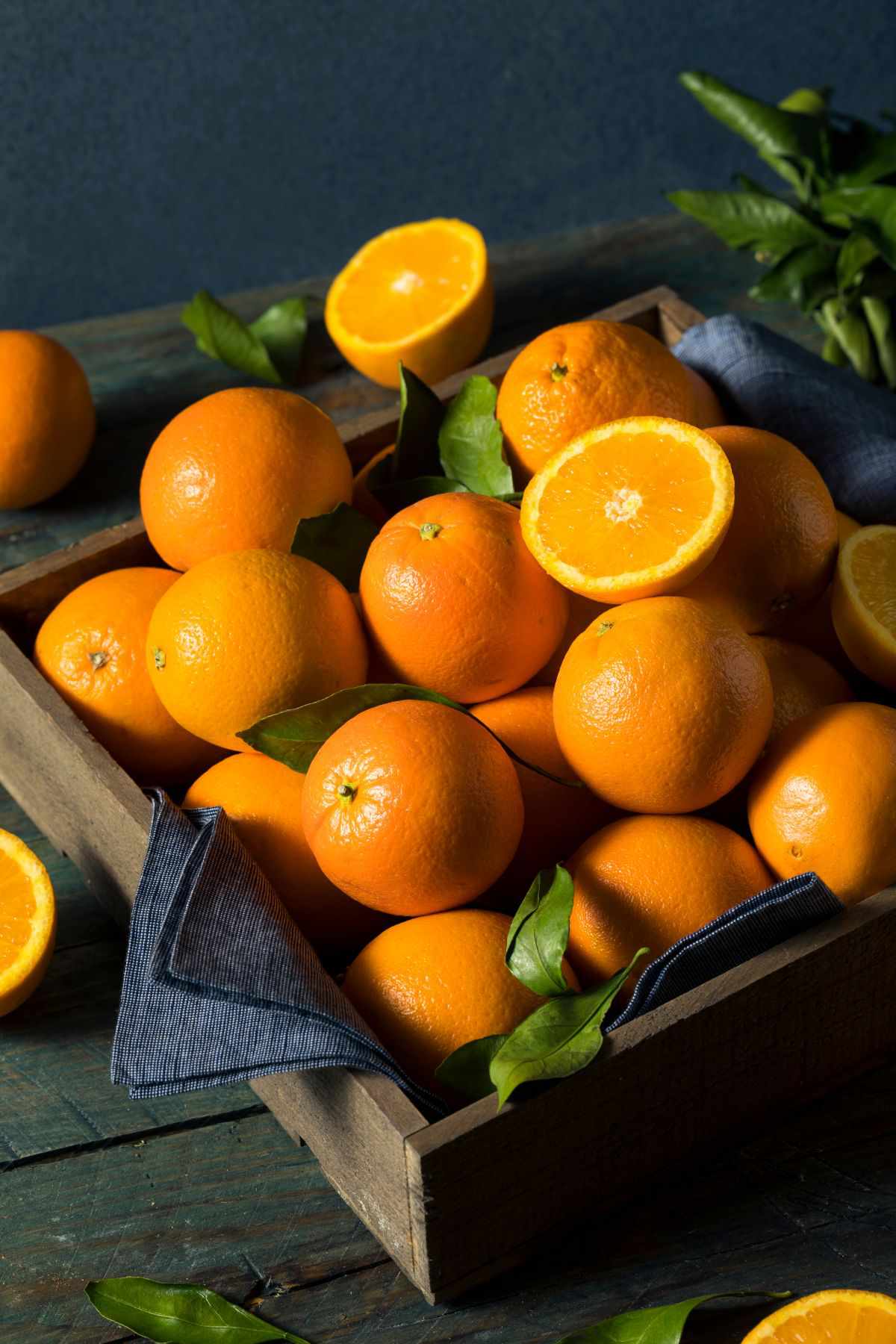
Oranges are a type of citrus with many varieties. Each has a unique flavor and appearance. Some are best eaten fresh, while others are ideal for juicing or cooking.
Bahianinha Oranges

photo courtesy Tulbagh Nursery
Bahianinha Orange, with its sweet orange flavor, originates from Brazil and is known for its medium size and smooth, thin rind. This early-bearing variety is particularly suited for making fresh orange juice due to its sweet, juicy taste, and is also great for fresh consumption. Its vibrant appearance makes it a delightful addition to the citrus family.
Cultivation tips suggest it thrives in sunny locations with nutritious soil, indicating its adaptability and ease of growth in suitable climates. This variety's unique characteristics lie in its early maturation and suitability for various culinary uses, making it a versatile choice for consumers and growers.
Belladonna Orange

photo courtesy - Tenuta Morano
Belladonna Orange is a seedless and highly juicy variety, primarily from Southern Italy but now also grown in the USA. Its name, translating to "beautiful lady" in Italian, suggests its appealing characteristics.
This variety is distinguished by its extreme juiciness, making it ideal for juicing or eating fresh. Its mostly seedless nature and fragrant aroma enhance its desirability.
The Belladonna orange stands out for its culinary versatility and health benefits, rich in Vitamin C and antioxidants. Its unique characteristics include a vibrant bright orange color and a sweet, aromatic flavor, making it a favorite for table display until ready for consumption.
Bergamot Oranges

photo courtesy Wiki
Bergamot Oranges, primarily grown for their essential oil, are native to southern Italy's Calabria region. They are known for their distinctive fragrance, used in perfumes, cosmetics, and Earl Grey tea flavoring.
Bergamot orange is a small, round fruit with a vibrant yellow color, a thin peel, and a slightly bitter flesh, making it less suitable for direct consumption but valuable for its aromatic oil. The orange trees thrive in warm climates, requiring well-draining soil and full sun exposure .
Bigaradier Apepu Oranges

photo courtesy Jaminex
Bigaradier Apepu oranges, originating from South Asia, are recognized for their unique flavor and texture. These have bumpy skin and a blend of sweet yet tart taste, offering a distinctive zesty flavor. They are a great addition for those looking to diversify their fruit tree collection due to their distinct taste profile .
Biondo Comune Oranges
Biondo Comune sweet orange is a medium to medium-large fruit known for its yellowish-orange color at maturity, juicy flesh, and pleasant flavor when fully ripe. It's considered one of the oldest Italian varieties, but its popularity has declined in recent decades.
This orange tree is described as vigorous, hardy, and productive, with a medium-early maturity that holds and ships well on the tree. Unfortunately, it's not commercially available in California
Blood Oranges

Blood oranges are celebrated for their deep red flesh, derived from anthocyanins, making them unique among fruits. They are a staple in Mediterranean regions and are adored for their sweet-to-tart flavor profile.
Popular in culinary uses like marmalade, baking, and salads (salad dressings), blood oranges are also packed with vitamin C and dietary fiber. The US season for blood oranges runs from December to May, and the Tarocco variety is noted for its sweetness and high vitamin C content .
Byeonggyul Orange

Byeonggyul Oranges, native to Jeju Island, South Korea, are highly revered and known for their sweet flavor and resistance to cold and insects. These small oranges, enjoyed in various forms such as eaten raw, dried, candied, or as cooking flavoring, have a significant cultural and historical presence, with a tree approximately 250 years old designated a national treasure .
Cara Cara Oranges

photo courtesy Speciality Produce
Cara Cara navel oranges are a type known for their pinkish-to-reddish-orange flesh. They differ from other navels primarily due to their seedlessness, sweetness, and low acidity.
Unlike blood oranges, which owe their color to anthocyanins, Cara Cara's pigmentation comes from carotenoids such as lycopene. They were discovered as a spontaneous mutation on a Washington navel orange tree in Venezuela in 1976 and entered the U.S. market in the late 1980s.
Cherry Oranges

photo courtesy Fruits Info
African cherry orange, scientifically known as Citropsis articulata, it is small native to Central and Western Africa. Valued for its medicinal properties, it is also known locally as omuboro. This fruit, about the size of a tangerine, offers a sweet and tangy flavor.
It's traditionally used in herbal medicine and is rich in vitamin C and vitamin A, supporting diabetes management and heart health. For culinary uses, it's enjoyed fresh and makes excellent orange juice or simply as an ingredient in desserts.
Chinotto Orange

photo courtesy Fast Growing Trees
Chinotto oranges, known scientifically as Citrus × myrtifolia, are small, bitter and native to Italy. They're often used in traditional Italian beverages like chinotto soda and liqueurs due to their unique bitter, sour orange flavor.
Besides their culinary uses, chinotto oranges offer health benefits, being a good source of vitamin C, folate, and potassium, which support immune health, digestion, and heart health
Clementines

Clementines are a hybrid oranges between a mandarin and sweet oranges, first propagated by Clément Rodier in Algeria. They have a deep orange glossy exterior, are easy to peel, are usually seedless, and are known for their sweet and less acidic flavor.
Originating from a spontaneous hybrid in Algeria, they're now cultivated in regions with lower heat requirements, such as North Africa and the Mediterranean basin
Cleopatra Mandarin

photo courtesy Wiki
Cleopatra Mandarin, also known as Citrus reshni, is native to India and was introduced to Florida from Jamaica in the mid-nineteenth century.
It's primarily used in agriculture as a rootstock for various citrus species due to its resistance to several diseases. The fruit is small, with an orange-red color, and has a somewhat acidic flavor
Daidai Bitter Oranges

photo courtesy Ocsar Tintori
Daidai, a bitter orange from Asia, originates from the Himalayas and has spread to Japan. Rarely consumed fresh due to its intense bitterness, the fruit's dried peel is instead used in Kampo, traditional Japanese medicine, for its digestive and expectorant properties.
The name "Daidai," meaning "several generations," reflects the fruit's unique characteristic of remaining on the tree for years if not harvested.
Dream Navel Oranges

Dream Navel Orange is recognized for its medium-sized, rich, and sweet flavor, with a flesh texture that is moderately soft. It matures early and maintains its internal quality well when left on the tree.
Discovered in 1939 and released in 1944 after being patented, it's commercially available in California through specific programs.
Hamlin Oranges
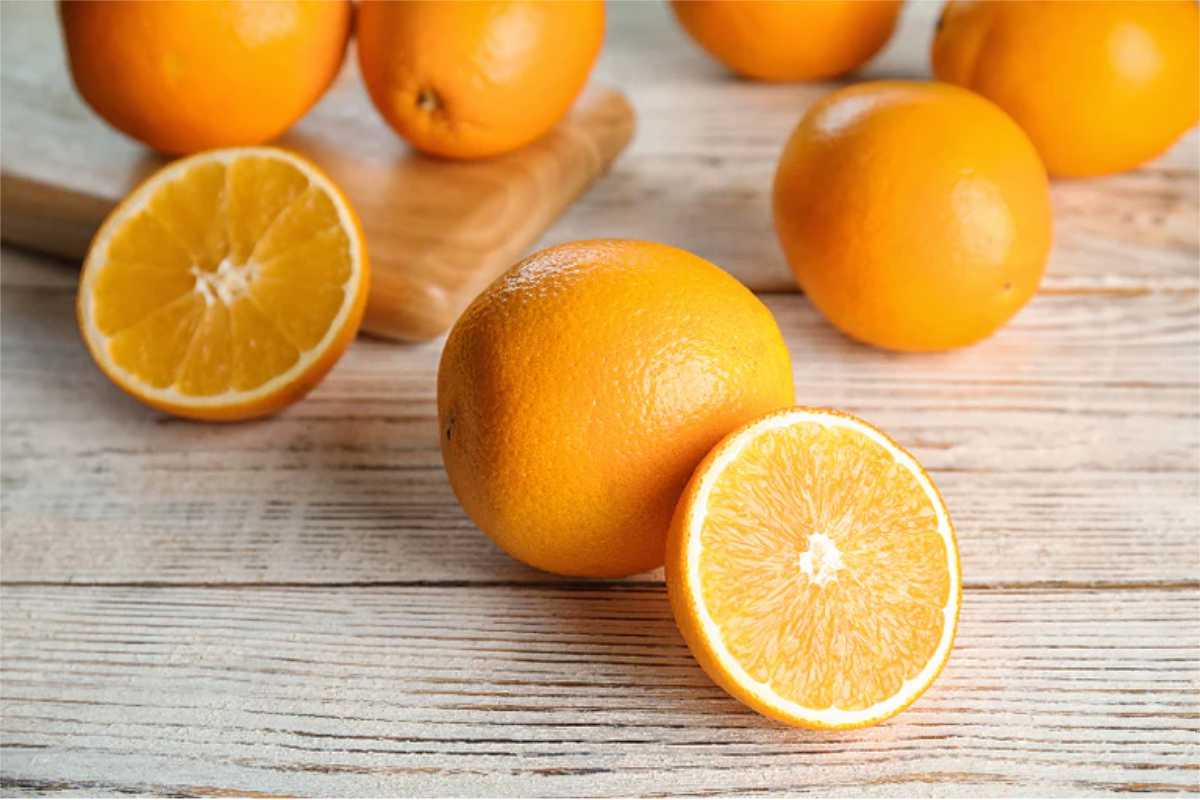
photo courtesy BackYard Citrus Trees
Hamlin Orange, discovered as a chance seedling in Florida in 1879, is known for its sweet flavor, tenderness, and juiciness, with few or no seeds.
It is particularly noted for its early maturity, making it a significant variety in Florida and a major early-maturing sweet orange variety worldwide. The Hamlin Orange is praised for its productivity and cold tolerance compared to other varieties.
Homosassa Oranges

Homosassa orange, originating from a seedling selection in Mr. Yulee's orchard in Homosassa, Florida, is known for its good flavor, moderate seediness, and midseason maturity. It's described as a vigorous, large, productive, and hardy orange tree.
Despite its historical significance as one of Florida's oldest varieties, recommended by the American Pomological Society in 1877, it hasn't gained commercial prominence outside arid climates due to its indifferent quality.
Jaffa Oranges

Jaffa orange, also known as Shamouti, is a seedless variety with a tough skin, making it suitable for export. Developed in mid-19th-century Ottoman Palestine, it is distinguished by its sweet, fine flavor and thick peel, which is easy to remove. It is one of the smaller types of oranges, typically weighing between 80 and 120 grams when fully ripe.
It stores well despite being unsuitable for orange juice due to its low juice content and delayed bitterness. It's cultivated across the Mediterranean, Middle East, and other regions.
Kishus Mandarin

Jincheng Orange, introduced to California from China in 1987, is known for its high soluble solids content. It's also referred to as "Brocade" orange or "S26" in China, favored for its oblong shape and reddish-orange rind, darker than 'Xianfengcheng.' It's particularly popular in Sichuan Province as the number one sweet orange, valued for its taste and appearance.
Kumquat

The Kumquat is easy to care for gardeners looking to grow their fruits, requiring only full sunlight and fertile soil. If these conditions are met, harvesting your bounty of this distinctive citrus will be well worth your while.
The Kumquat is a unique orange relative that offers an entirely different flavor profile than other common orange varieties. The word kumquat comes from the Chinese word for 'golden orange.'
Unlike traditional oranges, the Kumquat has a thin, edible skin and a sweet rind. It can be eaten fresh off the tree or cooked in various dishes, such as syrups or chutneys.
Jincheng Oranges
Jincheng Oranges, originating from Fujian Province in China, are known for their sweet yet slightly acidic flavor. Their skin is thick and orange-colored, adorned with small dimples and white speckles.
These oranges are ideal for juicing and require ample space to grow, as they can reach considerable heights. Their juicy flesh is divided into 8 to 10 sections, making them a fantastic choice for those seeking a great juicing orange.
Lima Orange
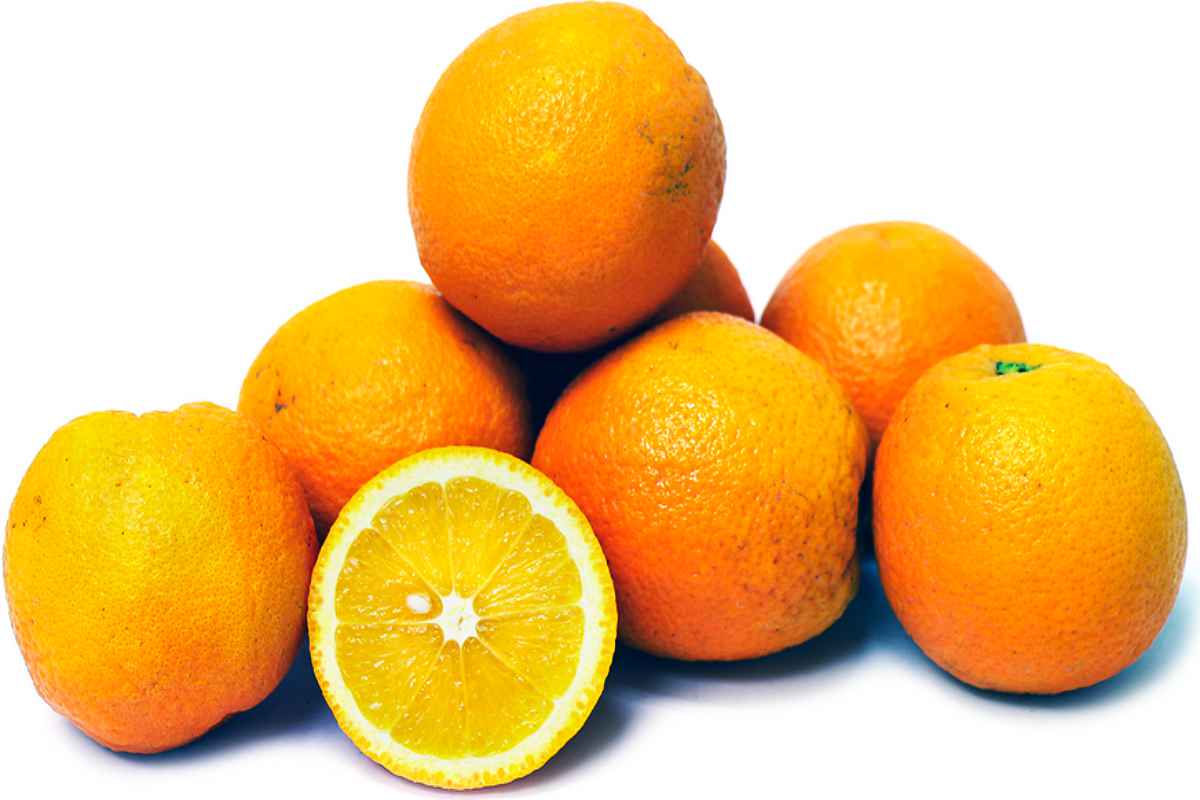
photo courtesy Speciality Produce
Lima Orange, also known as Limonero, hails from Peru and is a cold-tolerant variety that typically grows on small orange trees. This fruit is notable for its bright yellow color and sweet citrus aroma, resembling other orange types in appearance.
Maltaise Ovale Oranges

photo courtesy La Halles Gourmandes
Maltaise Ovale Oranges are deep orange winter fruits originating in the Mediterranean region. They are famed for their deep, sweet flavor, high sugar content, and smooth flesh with few seeds.
It is perfect for juicing, baking into cakes and puddles, or segmenting and using as a flavoring in salads (salad dressings), salsas, and even savory marinades, sauces, or sides.
Gardening enthusiasts love this wonderful fruit for its flavor and productivity; it produces abundantly when planted in ideal conditions close to the sea for an extra dose of salted air.
Mandarin Oranges

Mandarin Oranges are smaller, sweeter, and less acidic than larger oranges, with a thin, easy-to-peel skin. Originating in India and spreading across China, where they acquired the name "mandarin," these fruits eventually reached the Moroccan port of Tangier, earning them another name, "tangerine." There are about 200 orange varieties, including clementines and Satsumas, making them diverse in flavor and use.
Midsweet Oranges

photo courtesy Lemon Citrus Tree
Midsweet Orange, developed by the USDA in 1987, is a seedless, early variety celebrated for its high productivity and excellent soluble solids.
These sour-sweet oranges are known for their pleasant flavor and high yield, making them ideal for fresh consumption and processing. It stands out in the citrus family for those seeking a blend of sweetness and productivity in their cultivation efforts.
Minneola Oranges

Minneola Tangelo is a flavorful citrus fruit, a hybrid between Duncan grapefruit and Dancy mandarin, developed by the U.S. Department of Agriculture and released in 1931.
Recognized for its round shape with a pronounced neck and smooth red-orange rind, it offers a rich and juicy flavor with a hint of tartness from its grapefruit parent. For optimal sweetness, harvest it late in the season. It requires cross-pollination for the fruit, as self-pollination results in seediness.
Moro Oranges

Moro Blood Orange is celebrated for its deep red flesh and vibrant, burgundy-blushed peel, attributed to anthocyanin pigments. It's the most intensely colored among blood oranges, ripening earliest in the blood orange category, typically around January in Riverside.
Recognized for its round shape, moderate size, and cluster growth, it's favored for its rich flavor and aromatic qualities. It is recommended to harvest these oranges late in the season to achieve the best sugar-to-acid ratio
Murcott Oranges

photo courtesy Wiki
Murcott mandarin, also marketed as Honey, is believed to have emerged from the U.S. Department of Agriculture's citrus breeding program in Florida in the early 1900s.
It is medium-sized with a thin, smooth orange rind known for its rich flavor and juicy flesh. The fruit is prone to alternate bearing, and excessive fruit load can lead to "Murcott collapse." It is commercially available in California through the Citrus Clonal Protection Program
Narinj Oranges

photo courtesy Beneficios de
Narinj Orange is an incredibly delicious and robust citrus fruit. Native to the Middle East, the ancient variety has just begun to debut in North America.
It features a deep orange-red rind with a slightly mottled texture, and the fruit's meat is juicy and extremely flavorful. Narinj Oranges are best used when fully ripened on the tree, as they become sweeter yet more acidic upon storage, making them great for cooking or juicing!
Gardeners everywhere are delighted to find such a wonderful citrus fruit growing within their backyard; Narinj Oranges provide an abundance of zest while simultaneously introducing a new element to their harvesting experience.
Navel Orange

Navel Orange, a common orange known as Washington Navel, is a popular citrus fruit renowned for its juicy sweetness. It's known for its deep orange, oversized fruits with rough skins. Its season peaks in the winter months, usually from November through April, making them winter oranges.
These are ideal varieties to grow in home gardens due to their lack of seeds, thin skin, and sweet flavor. They are often used to make orange juice, marmalade, and a variety of desserts. Compared to other types of oranges, navels have the fewest pips (seeds), making them sweeter as well.
Navelina Oranges

Navelina Orange is a classic option for many citrus enthusiasts. It's harvested in mid-winter and is one of the sweeter options, especially when left to ripen on the tree.
With thick skin, it tends to hold up well during transit, making it a great choice for shipping and long storage times. Its big size makes it easy to peel, and it is often free of seeds and pith.
Whether you add it to your favorite sweet and tart salads or simply pop one off the tree for a quick snack, the Navelina Orange will deliver impressive flavor every time.
Ovale Oranges

photo courtesy UC Riverside
Ovale Oranges are uniquely shaped citrus fruits and one of the tastiest varieties of oranges. They have a flattened shape, something between an egg and a mandarin. Their slightly acidic flavor makes them perfect for creating delicious jams, compotes, and direct consumption.
Even though it is definitely popular among home gardeners, you can find them in some local markets during certain parts of the year. It can be tricky to properly care for this variety, but those willing to take the time will enjoy a steady stream of seasonal joy.
Parson Brown Oranges
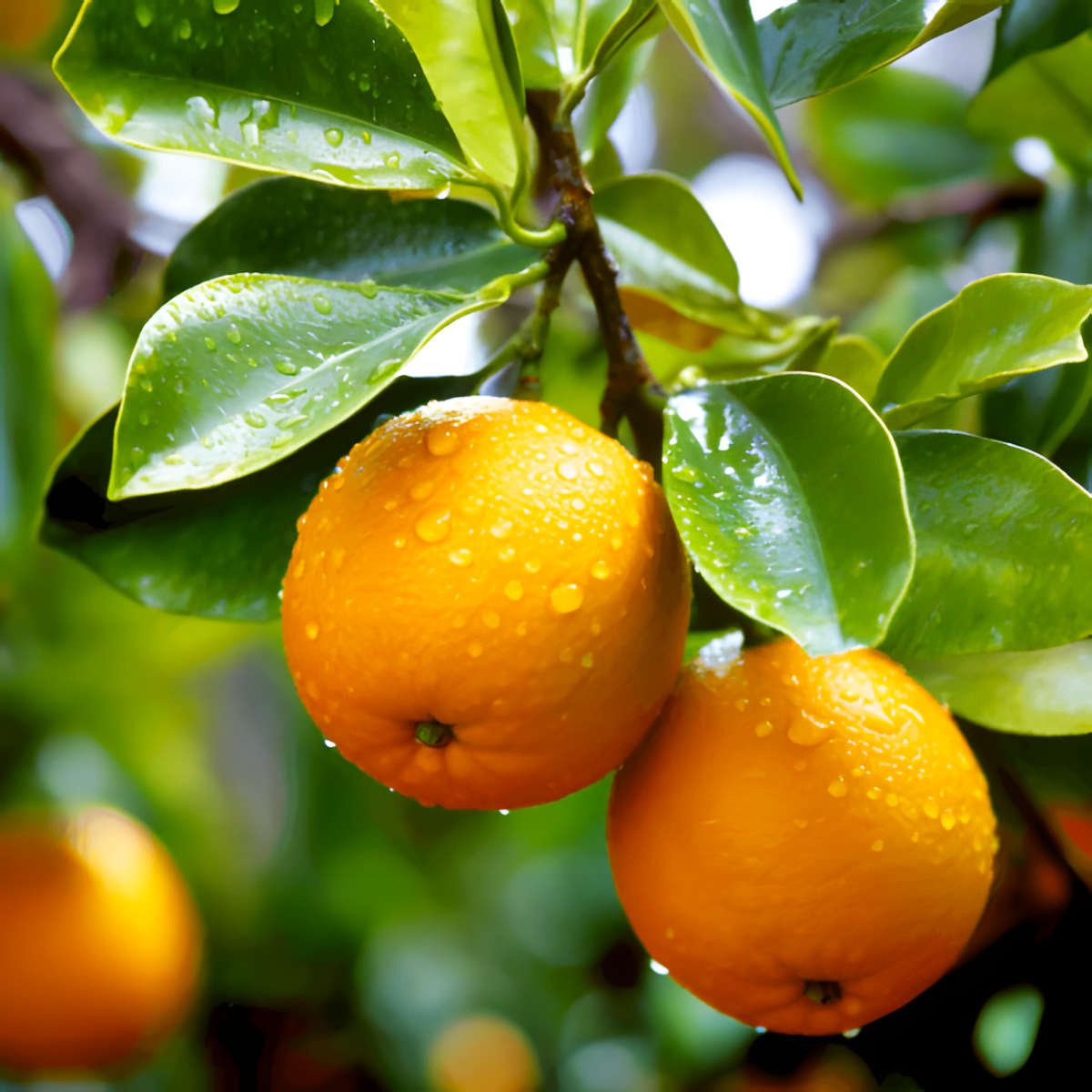
photo: the nursery center
Parson Brown Orange, with its distinctive acidic taste and sweet fruit profile, is a classic mid-season variety that thrives in Florida. Discovered in the mid-19th century, this orange is celebrated for its light yellow color when ripe, embodying a rich tapestry of flavor that makes it particularly excellent for preserves.
Its unique characteristics include an ability to balance acidity with sweetness, making it a versatile choice for culinary uses beyond just marmalades and jams. This type of orange can reach maximum size on smaller trees and is rich in vitamins C, B5, and A.
Cultivation tips highlight the importance of a sunny, well-drained location to encourage optimal growth and fruit production.
Pineapple Oranges
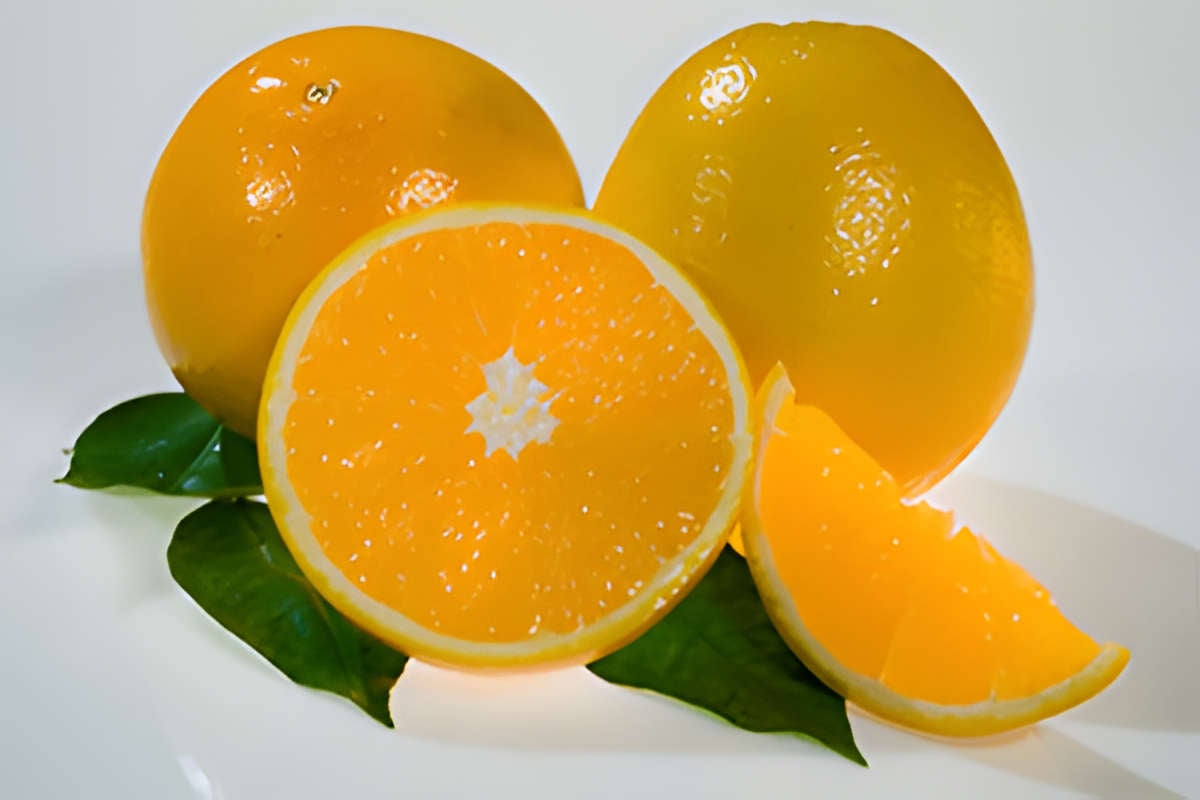
photo: Ridge Island Groves
Pineapple Orange, an old variety from Florida, is known for its juicy sweetness rather than a pineapple flavor. Contrary to its name, it does not taste like pineapples. Despite its decline in favor of seedless types, it has remained prized for its rich taste and fragrance since its development in the 1860s.
This orange variety, requiring warm climates and well-draining soil for cultivation, is ideal for fresh consumption and culinary uses, adding a sweet and tangy zest to dishes. It stands out with a medium to large size, yellow to reddish-orange pebbly peel, and contains 15 to 25 seeds
Salustiana Oranges

photo courtesy FrutaMare
Salustiana Orange is a mid-sized, sweet variety known for its tender flesh and high juice content. Originating from Spain around 1950, it has become popular for direct consumption and juicing due to its deliciously sweet flavor and minimal seed content.
The Salustiana orange is characterized by its finely pebbled, medium-thick peel, which is easy to remove, making it consumer-friendly. However, it can be acidic if not picked at the optimal time.
This variety is particularly noted for its ability to remain on the tree for extended periods without significant loss of quality. Cultivated primarily in Spain, Morocco, and Argentina, Salustiana oranges have a harvest season stretching from December to April, with a peak in winter.
Satsuma Oranges

photo courtesy Plants.com
Satsuma Oranges are a seedless mandarin variety and are celebrated for their sweet, juicy flavor and easy-to-peel skin. They're slightly larger and more citrusy than clementines, thriving in cooler temperatures, making them ideal for late fall to early winter snacking.
Rich in Vitamin C, they offer a nutritious boost with only 50 calories per fruit. Originating from Japan and popular in the US, particularly in California and the Southeast, Satsumas are a seasonal delight from October to December.
Their cultivation requires full sun and well-draining soil, with a notable resistance to cold, down to 15 degrees Fahrenheit, making them a resilient choice for gardeners in colder southern regions
Scarlet Navel Oranges

photo courtesy Hyatt Fruit Company
Scarlet Navel Oranges are celebrated for their distinctive sweet taste, nutritional benefits, and ease of cultivation. Their pinkish-red flesh is due to the natural presence of lycopene, an antioxidant known for health benefits such as improved heart and skin health.
Offering 100% of the daily recommended intake of Vitamin C, Cara Caras are an excellent choice for boosting immune health. They also provide essential nutrients like folate, fiber, potassium, and Vitamin A, supporting overall well-being.
Originating from a spontaneous mutation in Venezuela, Scarlet Orange is a treat for the taste buds and a visual delight with its unique interior color. Their season runs from December to May, making them a winter citrus favorite. They are extremely sweet, seedless, and have a lower acidity compared to other navel oranges,
Seville Oranges

photo courtesy Ireland Guide
Seville Oranges, also known as Bitter or Sour Oranges, are distinct for their thick, dimpled skin and a flavor profile that leans more towards bitter and sour oranges rather than sweet.
Originating from a blend of pomelo and mandarin orange, Seville Oranges are highly regarded in the culinary world. Their strong orange flavor and aromatic essential oils make them a preferred choice for marmalade and pickling and a crucial component in traditional recipes from Britain, Cuba, and Mexico.
Cultivated primarily in regions with a suitable Mediterranean climate, including California and Florida in the USA, and of course, Seville, Spain, these oranges have a notable history of cultivation dating back to their introduction in the early 1880s in Louisiana.
Sicilian Red Oranges

photo courtesy Ledger Insights
Sicilian Red Oranges, particularly Tarocco, Moro, and Sanguinello varieties, are famed for their vibrant red pulp and unique health benefits.
These oranges, exclusive to Sicily, owe their distinct coloration to anthocyanins, powerful antioxidants linked to cancer prevention and cell protection from oxidative damage. Rich in vitamins, especially vitamin C, and minerals, they support the immune system.
The red orange's flavor is slightly sour with a low sugar level, distinguishing it from other orange varieties. The cultivation of these oranges benefits significantly from Sicily's Mediterranean climate, with volcanic soil enriching their color and flavor.
Tangelo

Tangelo is a unique type of orange created by the hybridization of tangerine and pomelo. Its shape can be oval, round, or bell-like, with an orange to yellowish color outside and juicy light orange segments inside.
It has a sweet but delicately sour orange taste, making it a great ingredient for cocktails, fruit salad, simple fresh salads, and marinades. Tangelos have less juice than regular oranges and lack tanginess due to its lower acidity levels, making them more flavorful and smoother. Yet called sour oranges by some standards.
For gardeners looking for a unique citrus tree, the tangelo is an excellent choice with its relatively easy maintenance.
Tangerine

A Tangerine, or mandarin orange, is a delicious tart-sweet citrus fruit with a beautiful orange or reddish hue. Although they generally look similar to oranges, they are typically smaller and less acidic.
Tangerines can be propagated in the garden from seeds taken inside the fruit and planted in well-draining soil. Once established, they require minimal care but should be permitted ample airflow during winter and kept dry to prevent fungal growth.
If properly cared for and watered regularly, tangerines can produce many sweet fruits for generations!
Tarocco Oranges

Tarocco Orange is an Italian orange found in the country's warmer Mediterranean climate region. It is one of the sweetest types of oranges, with a delightful and juicy flavor that makes it a favorite among many fruit enthusiasts.
Unlike oranges grown in cold climates, the Tarocco's thin skin peels easily, making it a great choice for eating fresh or juicing. These oranges are also high in nutrition.
They are packed with vitamins and phytonutrients, such as beta carotene and vitamin C. Gardening experts recommend planting Tarocco trees whenever possible due to their heavy yields and using them in various recipes, such as marmalade or sorbet.
Trifoliate Oranges

Trifoliate Orange (Poncirus trifoliata) is an evergreen citrus plant with attractive 3-foliate leaves comprising three pointed leaflets. The foliage is aromatic when crushed, and it also bears small white flowers with conspicuous petioles (flower stalks); it can bloom several times a year.
When ripe, the fruit is round and has brownish-yellow, bumpy skin but can also be yellow or green; however, it is only slightly sweet to taste. Trifoliate oranges are commonly used for their tolerance for cold weather or ornamental purposes, as this species is hardy and easy to care for.
Therefore, it is no surprise that this plant powerhouse has been taken from its native eastern Asia to become one of the most popular types of orange around the globe.
Valencia Orange

Valencia Oranges are sweet and versatile and are a summer cultivar recognized for their medium to thin, golden-orange skin, which is slightly rough and leathery. These oranges are particularly loved for their juicy quality, making them an ideal choice for fresh juice. Oranges stand out for their 100% Valencia origin, signifying a tradition of cultivation dating back to 1781.
Grown primarily in environments like Florida, where sunshine, rich soil, and predictable rains nourish the trees, Valencia Oranges have a typical harvest season from October through April.
Variegated Valencia Oranges

photo courtesy Tasy Landscape
Variegated Valencia Orange is a fascinating variant of the common orange, offering a twist with its variegated leaves and fruit. Some fruits resemble normal Valencia oranges, while others show stripes and ridges of variegation. The variegation is more pronounced when unripe, turning uniformly orange upon ripening yet maintaining a textured surface.
This variety tastes similar to regular Valencia Oranges but can have subtle sweetness differences. It matures from March to August in San Diego, providing a long fruiting season.
Washington Navel Oranges

Washington Navel Oranges, cherished for their seedlessness, rely on grafting for propagation, highlighting their rich cultivation history since their 19th-century introduction to California. Characterized by their moderate size and sweet, easily peeled fruit, these oranges are perfect for fresh consumption, juicing, or culinary use.
They mature in late fall to early winter, maintaining quality on the tree for months. Ideal growing conditions include USDA Hardiness Zones 8-10, full sun, and well-drained soil, emphasizing the need for balanced moisture.





Is Karen Evans says
I love oranges lately I have come across an orange that's across between a sumo orange and ameniola and possibly even mixed with tangerine or Mandarin I think it begins with a day and it's the best damn orange I've ever had